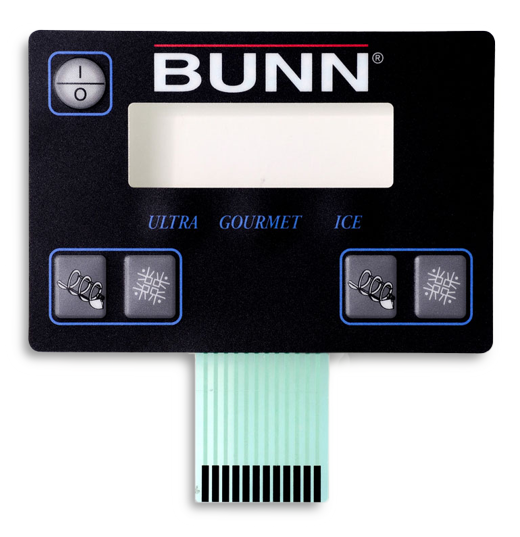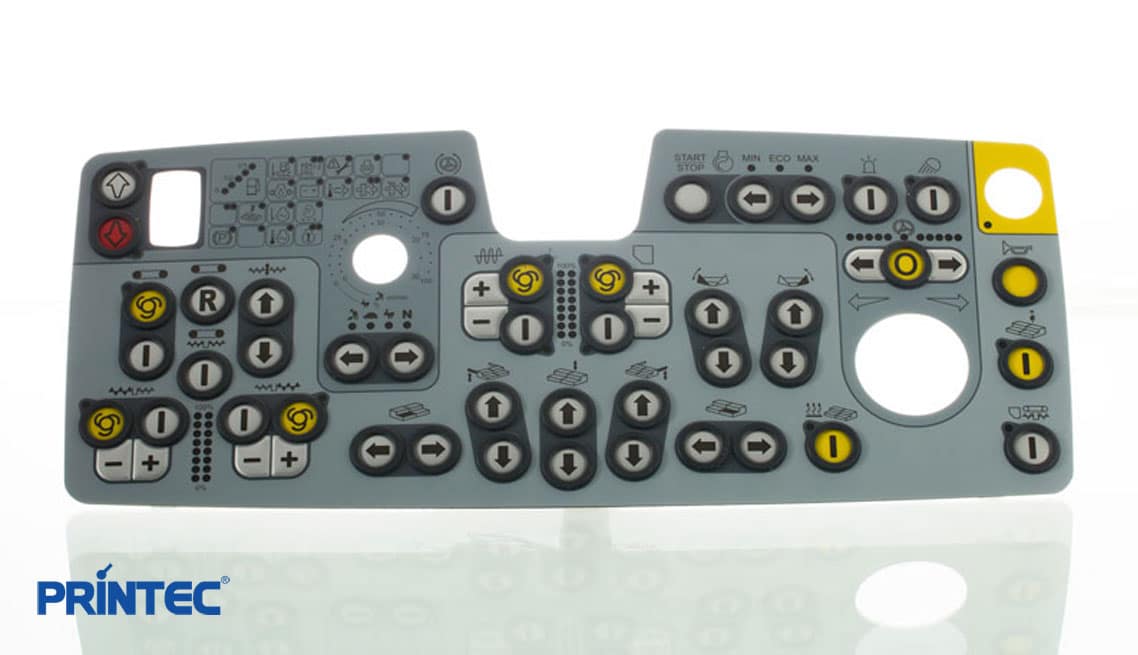Why Membrane Switches Are Preferred for Their Thin and Compact Styles
Why Membrane Switches Are Preferred for Their Thin and Compact Styles
Blog Article
The Ultimate Source on Membrane Switches: Design, Performance, and Applications
Membrane layer switches over offer as an interesting crossway of layout and capability, playing a pivotal role in contemporary interface throughout various industries. This source unboxes the vital elements that add to their efficiency, consisting of visuals overlays and circuit traces, while additionally elucidating the systems behind their pressure activation. As we discover the varied applications of membrane layer switches, it ends up being evident that their adaptability and longevity are important in atmospheres varying from healthcare to consumer electronic devices. The nuances of their style and functional concepts might reveal also deeper insights worth considering.

Recognizing Membrane Buttons
Membrane buttons are a sort of interface technology commonly used in different digital devices, identified by their thin, versatile design and performance. These buttons consist of numerous layers that include graphic overlays, adhesive layers, and circuitry, making it possible for a portable and effective interface for customers. They can be located in home appliances, clinical gadgets, and industrial control board, offering a reputable method for customer interaction.
One of the main advantages of membrane layer buttons is their capacity to stand up to contaminants such as dust and wetness, making them ideal for environments where toughness is important. Their low-profile style permits smooth integration into different applications, while the customizable graphic overlays improve customer experience by giving clear aesthetic feedback. Additionally, membrane switches can accommodate a range of innovations, such as responsive responses and backlighting, more boosting their usability.
The manufacturing process for membrane switches usually includes screen lamination, die-cutting, and printing strategies, making sure precision and consistency in manufacturing. On the whole, membrane layer switches over stand for a reliable and flexible option for contemporary electronic devices, incorporating capability with visual allure in individual interface style.
Key Components and Design Components
A selection of crucial elements and design components integrated to produce an effective membrane layer button. At the core, the visuals overlay offers both useful and aesthetic objectives, providing an user-friendly interface while safeguarding inner elements from ecological elements. The selection of materials, typically polyester or polycarbonate, affects sturdiness and responsive responses.
Underneath the overlay, the glue layer makes sure the button adheres safely to the substratum, which can be glass, metal, or plastic. The spacer layer is essential, as it preserves the necessary void between the circuit and the overlay layers, enabling effective actuation. Membrane Switches. Circuit traces, normally made from conductive ink or adhesive, are published on a flexible substrate, allowing electric signals to be sent when pressure is applied
Style factors to consider also include the plan of tactile domes or embossing that give physical feedback to the user, improving the general experience. In addition, the layout and spacing of the switches should be enhanced for simplicity of usage, guaranteeing that individuals can browse the user interface intuitively. In general, these parts and design elements work synergistically to develop a reputable, useful membrane layer button customized to details applications.
Capability and Procedure Mechanism
At the heart of effective functionality for membrane switches exists their functional device, which facilitates user interaction through an easy yet effective style. These switches operate the principle of pressure activation, where an individual applies pressure to a marked location of the button (Membrane Switches). This action compresses the layers of the switch, completing an electric circuit that sends out a signal to the connected gadget
The building commonly includes a top visuals layer, a glue spacer layer, and a bottom circuit layer, which jointly develop a robust interface. When stress is used, the top layer collapses against the lower circuit layer, permitting conductive traces to link. This design not just makes it possible for clear responsive feedback but also makes certain toughness and integrity, as the switches are often immune to dust and moisture.
In addition, the adaptability of membrane changes enables assimilation with numerous modern technologies, consisting of LED signs and microcontrollers, enhancing their functionality. By providing a streamlined user interface that lessens mechanical wear, membrane layer switches continue to be a popular option in applications varying from consumer electronics to industrial devices, making sure ideal performance and user contentment across varied settings.
Types of Membrane Switches

Another substantial classification is brightened membrane switches, which incorporate backlighting to enhance visibility in low-light conditions. These switches are commonly used in see it here control panels and dashboards where clear visibility is necessary.
Additionally, there are customized membrane layer changes made to satisfy details dimensional, graphical, and functional needs. These modifications can include special forms, colors, and designs, permitting smooth integration into different gadgets.

Applications Across Different Industries
Exactly how do membrane layer switches improve functionality across varied industries? These flexible elements are integral to numerous applications, providing streamlined customer interfaces and robust efficiency. In the medical market, membrane layer switches play an essential duty in tools such as diagnostic tools and person surveillance systems, where dependability and simplicity of cleaning are extremely important. Their ability to stand up to extreme environments makes them optimal for research laboratory tools and surgical tools.
In the automobile market, membrane layer switches are generally made use of in click to investigate control panels and control panels, supplying user-friendly controls that enhance motorist safety and comfort. The consumer electronic devices market likewise gains from their lightweight and personalized functions, allowing sleek layouts for smartphones and home appliances.
Additionally, membrane layer switches find applications in industrial automation, where they add to reliable equipment operation and monitoring systems. Their resistance to dust and wetness makes certain functionality in demanding conditions (Membrane Switches). Furthermore, the food and beverage market uses membrane layer buttons for tools control, where health and sturdiness are essential
Conclusion
In final thought, membrane switches stand for a vital technology in user interface innovation, identified by their unique layout and capability. The adaptability of membrane switches over promotes their application across varied markets, from medical gadgets to consumer electronic devices.
Membrane switches offer as an interesting intersection of style and functionality, playing an essential function in modern-day individual interfaces across different sectors.Membrane layer switches are a kind of user interface modern technology commonly made use of in different digital devices, identified by their thin, adaptable design and capability.At the heart of effective capability for membrane my sources changes exists their operational system, which facilitates individual communication with a straightforward yet efficient style. These buttons operate on the concept of stress activation, where a user uses pressure to a designated area of the button.In conclusion, membrane switches over represent a critical development in individual interface modern technology, characterized by their special layout and functionality.
Report this page